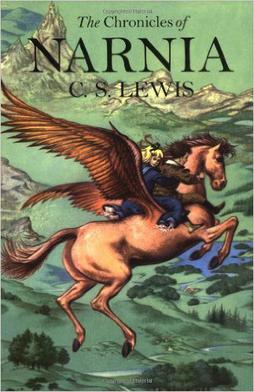
The Chronicles of Narnia is a series of seven portal fantasy novels by British author C. S. Lewis. Illustrated by Pauline Baynes and originally published between 1950 and 1956, The Chronicles of Narnia has been adapted for radio, television, the stage, film, and video games. The series is set in the fictional realm of Narnia, a fantasy world of magic, mythical beasts and talking animals. It narrates the adventures of various children who play central roles in the unfolding history of the Narnian world. Except in The Horse and His Boy, the protagonists are all children from the real world who are magically transported to Narnia, where they are sometimes called upon by the lion Aslan to protect Narnia from evil. The books span the entire history of Narnia, from its creation in The Magician's Nephew to its eventual destruction in The Last Battle.

Eric Brighteyes is an epic Viking novel by H. Rider Haggard that concerns the adventures of its eponymous principal character in 10th-century Iceland. The novel was first published in 1891 by Longmans, Green & Company. It was illustrated by Lancelot Speed.
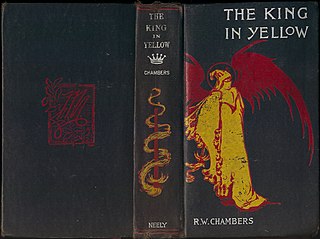
The King in Yellow is a book of short stories by American writer Robert W. Chambers, first published by F. Tennyson Neely in 1895. The British first edition was published by Chatto & Windus in 1895.

Prince Caspian is a high fantasy novel for children by C. S. Lewis, published by Geoffrey Bles in 1951. It was the second published of seven novels in The Chronicles of Narnia (1950–1956), and Lewis had finished writing it in 1949, before the first book was out. It is volume four in recent editions of the series, sequenced according to the internal chronology of the books. Like the others, it was illustrated by Pauline Baynes and her work has been retained in many later editions.
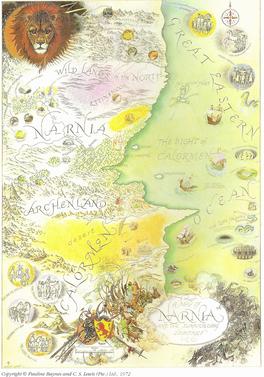
Narnia is a fantasy world created by C. S. Lewis as the primary location for his series of seven fantasy novels for children, The Chronicles of Narnia. The world is named after the country of Narnia, where much of the Chronicles takes place.
Fantastique is a French term for a literary and cinematic genre and mode that is characterized by the intrusion of supernatural elements into the realistic framework of a story, accompanied by uncertainty about their existence. The concept comes from the French literary and critical tradition, and is distinguished from the word "fantastic", which is associated with the broader term of fantasy in the English literary tradition. According to the literary theorist Tzvetan Todorov, the fantastique is distinguished from the marvellous by the hesitation it produces between the supernatural and the natural, the possible and the impossible, and sometimes between the logical and the illogical. The marvellous, on the other hand, appeals to the supernatural in which, once the presuppositions of a magical world have been accepted, things happen in an almost normal and familiar way. The genre emerged in the 18th century and knew a golden age in 19th century Europe, particularly in France and Germany.

Melmoth the Wanderer is an 1820 Gothic novel by Irish playwright, novelist and clergyman Charles Maturin. The novel's titular character is a scholar who sold his soul to the devil in exchange for 150 extra years of life, and searches the world for someone who will take over the pact for him, in a manner reminiscent of the Wandering Jew.
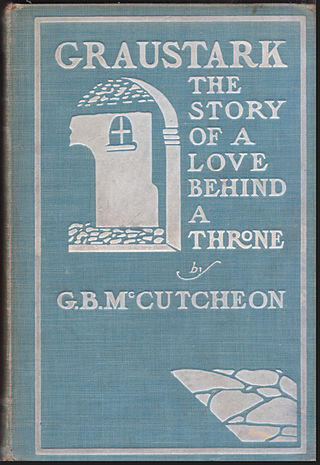
Graustark is a fictional country in Eastern Europe used as a setting for several novels by George Barr McCutcheon. Graustark's neighbors, which also figure in the stories, are Axphain to the north and Dawsbergen to the south.

Elements of the supernatural and the fantastic were an element of literature from its beginning. The modern genre is distinguished from tales and folklore which contain fantastic elements, first by the acknowledged fictitious nature of the work, and second by the naming of an author. Works in which the marvels were not necessarily believed, or only half-believed, such as the European romances of chivalry and the tales of the Arabian Nights, slowly evolved into works with such traits. Authors like George MacDonald (1824–1905) created the first explicitly fantastic works.

The Hampdenshire Wonder is a science fiction novel by J. D. Beresford, first published 1911. It is one of the first novels to involve a wunderkind. The child, Victor Stott, is the son of a famous cricket player. This origin is perhaps a reference to H.G. Wells's father Joseph Wells, a cricketer. The novel concerns his progress from infant to almost preternaturally clever child. Victor Stott is deformed subtly to allow for his powerful brain. A prominent, and unpleasant, character is the local minister. As Beresford's father was a minister, and Beresford was himself partially disabled, some see autobiographical aspects to the story. However this is unproven.
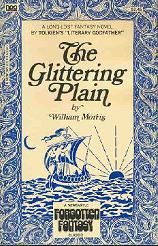
The Newcastle Forgotten Fantasy Library was a series of trade paperback books published in the United States by the Newcastle Publishing Company between 1973 and 1980. Presumably under the inspiration of the earlier example set by the Ballantine Adult Fantasy series, the series reissued a number of works of fantasy literature that had largely been forgotten, being out of print or otherwise not easily available in the United States, in durable, illustrated trade paperback form with new introductions. For a number of works the Library’s editions constituted the first U.S. or first paperback edition. Together with the earlier series from Ballantine Books, it contributed to the renaissance of interest in the fantasy genre of the 1970s.

The Pilot: A Tale of the Sea is a historical novel by James Fenimore Cooper, first published in 1823. Its subject is the life of a naval pilot during the American Revolution. It is often considered the earliest example of nautical fiction in American literature. It is one of Cooper's most renowned works and is considered a classic of adventure literature. The novel follows the thrilling adventures of a mysterious and daring seafarer known as "The Pilot."

Trumpkin is a fictional character in C. S. Lewis' fantasy novel series The Chronicles of Narnia. Trumpkin is an intensely practical and skeptical dwarf who lives during the reigns of King Miraz and King Caspian X. He is a major character in Prince Caspian, briefly mentioned in The Voyage of the Dawn Treader, and is a minor character in The Silver Chair.
The Story of the Glittering Plain is an 1891 fantasy novel by William Morris, perhaps the first modern fantasy writer to unite an imaginary world with the element of the supernatural, and thus the precursor of much of present-day fantasy literature. It is also important for its exploration of the socialist themes that interested Morris.

The Wood Beyond the World is a fantasy novel by William Morris, perhaps the first modern fantasy writer to unite an imaginary world with the element of the supernatural, and thus the precursor of much of present-day fantasy literature. It was first published in hardcover by Morris's Kelmscott Press, in 1894. The book's importance in the history of fantasy literature was recognized by its republication by Ballantine Books as the third volume of the Ballantine Adult Fantasy series in July, 1969. The Ballantine edition includes an introduction by Lin Carter.

The Sundering Flood is a fantasy novel by British writer William Morris, perhaps the first modern fantasy writer to unite an imaginary world with the element of the supernatural, and thus the precursor of much of present-day fantasy literature. The Sundering Flood was Morris' last work of fiction, completed only in rough draft, with the ending dictated from his deathbed. It was edited posthumously by his daughter May into finished form for publication and published in 1897.

A Tale of the House of the Wolfings and All the Kindreds of the Mark is a fantasy novel by William Morris, perhaps the first modern fantasy writer to unite an imaginary world with the element of the supernatural, and thus the precursor of much of present-day fantasy literature. It was first published in hardcover by Reeves and Turner in 1889.

Fantasy is a genre of speculative fiction involving magical elements, typically set in a fictional universe and usually inspired by mythology or folklore. The term "fantasy" can also be used to describe a "work of this genre", usually literary.

The Roots of the Mountains: Wherein is Told Somewhat of the Lives of the Men of Burgdale, Their Friends, Their Neighbours, Their Foemen, and Their Fellows in Arms is a fantasy romance novel by William Morris, perhaps the first modern fantasy writer to unite an imaginary world with an element of the supernatural, and thus the precursor of much of present-day fantasy literature. It was first published in hardcover by Reeves and Turner in 1889. Its place in the history of fantasy literature was recognized by its republication by the Newcastle Publishing Company as the nineteenth volume of the Newcastle Forgotten Fantasy Library in April, 1979.
The following outline is provided as an overview of and topical guide to Narnia:

















